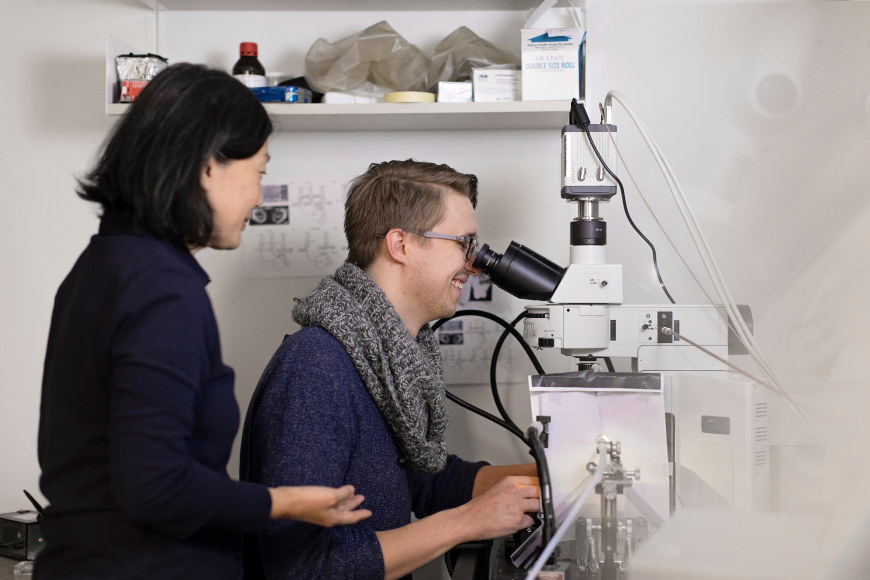Chemosensory laboratory – Department of psychology
Chemosensory laboratory
 Photo: Elin Iversen/NTNU
Photo: Elin Iversen/NTNUStudying basic mechanisms of olfaction
Lessons we can learn from the small insect brain
All creatures, from single-cell organisms to humans, can detect chemical signals from their environments. Odor-evoked behaviors are therefore manifested in a variety of ways, from simple bacterial chemotaxis to the emotional human reaction to a particular scent. Nevertheless, the primary function of the olfactory system is to encode and interpret the input to provide the organism with vital information.
The human olfactory system is a highly complex and sophisticated sensory system. Chemosensory perception constitutes a significant element of human life. However, the neural principles typifying odor coding in the human is hard to explore. The ‘general odor problem’ – which implies that the sense of smell is challenged with an almost infinite number of putative stimuli, in contrast to most other sensory systems – particularly applies to humans. We therefore utilize an ideal model organism, in which several biologically relevant odorants have been identified, the moth brain. Studying the insect brain also allows advanced experimental approaches which are unfeasible on the human brain.
In our research we utilize different experimental methods including mass staining, immunohistochemistry, intracellular recording/staining, confocal microscopy/modelling, and calcium imaging. In addition to exploring the olfactory system, we also study how cross‑modal input from vision and odor is integrated at various levels of the central nervous system.
Selected publications from the Research group
Projects
Funding from Norwegian Research Council, NFR:
Funding from Horizon Europe:
PURPEST (Plant pest prevention through technology-guided monitoring and site-specific control)
Completed Projects
Lab members
- Xi Chu, Research fellow
- Elena Ian, Research fellow
- Jonas Kymre, Research fellow
- Nicholas Kirkerud, Research fellow
- Mikkel N. Haug, Master student
- Anjela Brianne Griffin, Master student
- Christian Ferdinand Lae Vale, Student at the clinical study program in psychology
- Hanna Mustaparta, Professor emeritus
National and international collaborators:
- Dr. Stanley Heinze, Lund University, Sweeden
- Professor Guirong Wang, Chinese Academy of Agricultural Sciences, Beijing, China
- Professor Xincheng Zhao, Department of Entomology, College of Plant Protection, Henan Agricultural University, Zhengzhou, China
- Professor Yang Liu, Chinese Academy of Agricultural Sciences, Beijing, China
- Professor Giovanni Galizia, University of Konstanz, Germany
- Associate Professor Pål Kvello, Department of teacher education, NTNU
- Researcher Atle Wibe, Norsk senter for økologisk landbruk, NORSØK
